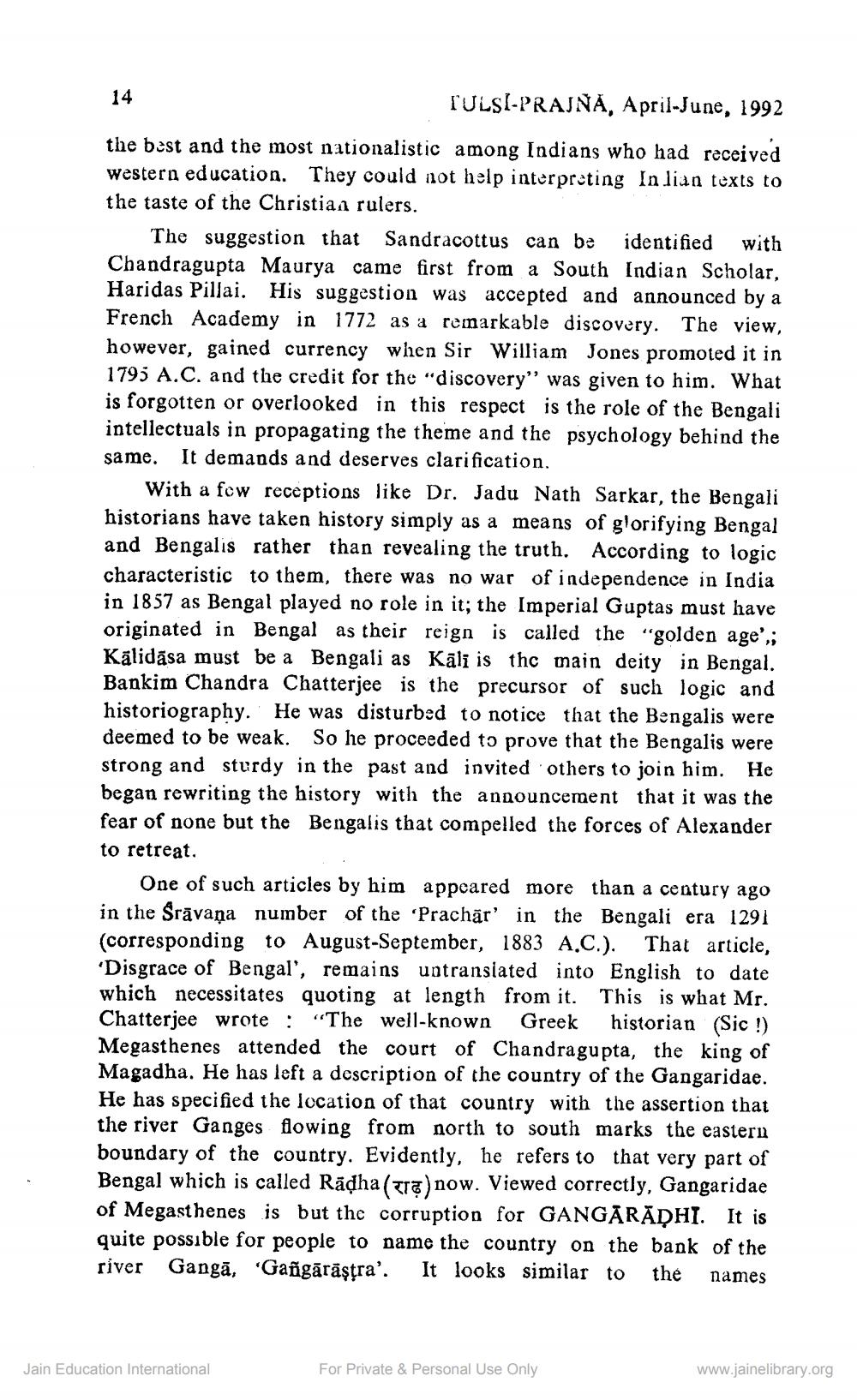________________
14
TULSI-PRAJNĂ, April-June, 1992
the best and the most nationalistic among Indians who had received western education. They could not help interpreting In lian texts to the taste of the Christian rulers.
The suggestion that Sandracottus can be identified with Chandragupta Maurya came first from a South Indian Scholar, Haridas Pillai. His suggestion was accepted and announced by a French Academy in 1772 as a remarkable discovery. The view, however, gained currency when Sir William Jones promoted it in 1795 A.C. and the credit for the "discovery” was given to him. What is forgotten or overlooked in this respect is the role of the Bengali intellectuals in propagating the theme and the psychology behind the same. It demands and deserves clarification.
With a few receptions like Dr. Jadu Nath Sarkar, the Bengali historians have taken history simply as a means of glorifying Bengal and Bengalis rather than revealing the truth. According to logic characteristic to them, there was no war of independence in India in 1857 as Bengal played no role in it; the Imperial Guptas must have originated in Bengal as their reign is called the "golden age',; Kālidāsa must be a Bengali as Kāli is thc main deity in Bengal. Bankim Chandra Chatterjee is the precursor of such logic and historiography. He was disturbed to notice that the Bengalis were deemed to be weak. So he proceeded to prove that the Bengalis were strong and sturdy in the past and invited others to join him. He began rewriting the history with the announcement that it was the fear of none but the Bengalis that compelled the forces of Alexander to retreat.
One of such articles by him appeared more than a century ago in the Srāvaņa number of the 'Prachār' in the Bengali era 1291 (corresponding to August-September, 1883 A.C.). That article, ‘Disgrace of Bengal', remains uptransiated into English to date which necessitates quoting at length from it. This is what Mr. Chatterjee wrote: "The well-known Greek historian (Sic !) Megasthenes attended the court of Chandragupta, the king of Magadha. He has left a description of the country of the Gangaridae. He has specified the location of that country with the assertion that the river Ganges flowing from north to south marks the eastern boundary of the country. Evidently, he refers to that very part of Bengal which is called Rādha (ra)now. Viewed correctly, Gangaridae of Megasthenes is but the corruption for GANGĀRĀDHI. It is quite possible for people to name the country on the bank of the river Gangā, "Gañgārāşțra'. It looks similar to the names
For Private & Personal Use Only
Jain Education International
www.jainelibrary.org




